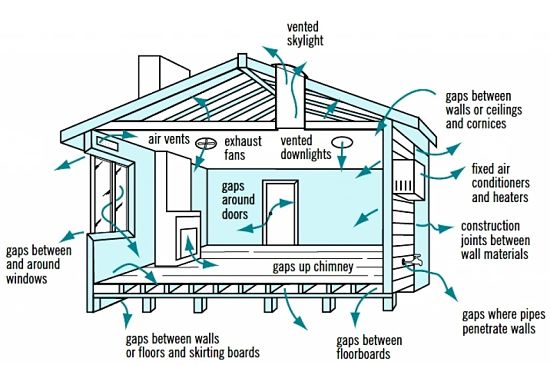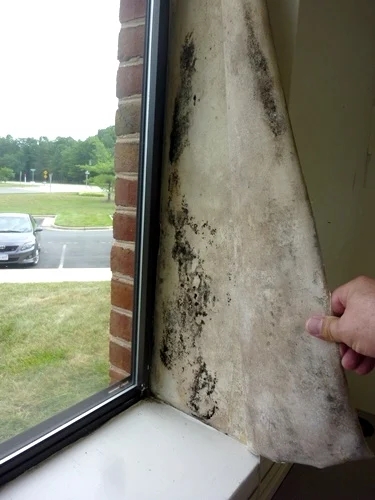Guide for Home Buyers: A Warning Signs Checklist
We have all heard the horror stories of people who have bought a property that was a lemon—fine on the outside, but with serious hidden defects on the inside that cost thousands to fix.
The initial rule when buying your first home, or upgrading, is to use your head rather than your heart. You need a way to quickly, objectively, and thoroughly check for signs of existing problems, and also signs that problems may occur down the road.
You can do the initial appraisal yourself, but if you are serious, have your home checked by the experts afterward. A good way to conduct your inspection is to divide the prospective property into three areas: the inside, the outside, and the surrounding properties (neighborhood and structures).
This article provides a checklist of potential problems to look for and things you need to check further. Using it, you can quickly drop the lemons and focus on the properties that are good potential buys. If you have families or friends that have some knowledge of building structures and local problems, get them to come with you. They will be able to provide a sensible opinion about the property and offer advice on what to look for. They may also help to balance your emotions and provide objective assessments.

What to Check for Inside the House
1. Water Pressure
Turn on the taps in the bathroom, kitchen and laundry. Check the pressure and look for signs of rust in the water and any slow draining from the sinks.
2. Dampness
Check the walls and ceiling for any stains, water marks, or damaged paint. A freely painted area my indicate the seller has tried to cover over a damp area to hide it. Check for any damp smells in rooms and cupboards.
3. Cracks in the Walls, Ceiling, or Doors That Stick in the Frames
These may be signs of warping in the house frame, subsidence, or other movement. It may signal severe damage that may need to be checked by a structural engineer. Minor cracks are unlikely to be a problem in older houses.
4. Sticking Windows
If the windows are hard to open or close, then the frame is rusted (if they're metal) or are warped (if they're wood). New paint jobs may indicate attempts to hide this. Tap and push around wooden window and door frames to check for signs of dampness, dry rot, or worse, termite infections.
5. Mold
If you find mold in the kitchen or bathroom, it usually means that there are ventilation problems, leaks, or rising dampness in the walls.

6. New Paint
Recent paint jobs may be a good sign that the seller has tried to improve the appearance of the house. But if the new painting is in vulnerable areas it may be suspicious. Run your hands down walls and look at them from different angles for signs of any problems.
7. Bathroom
Check and look for damaged enamel on the bath and washbasin. Also, check for broken surfaces or any swelling in the timber of the cupboards. Loose grout in the shower recess, or missing, lifting or cracked tiles can be signs of water damage. Check the pipes, drains, and plumbing for leaks. If the shower recess is leaking, this can be a very expensive repair job.
8. Hot Water System
Ask for details about the age of the water heating system. Check for signs of leaks and whether there have been regular inspections. Check that the pressure relief valve is working and the wiring and fuel lines are sound. Run the hot water to check the temperature and listen for any bangs in the pipes.
9. Insulation
If you can, peer through the manhole up into the roof and check the condition of the insulation. Ask whether the walls are insulated and inquire about the insulation rating for the house.
10. Pests
Look for signs of all types of pests. Look for rat or mouse droppings, mousetraps, or poisons. Also, look for dead cockroaches that may have been missed in the cleanup. Sagging floors, as well as hollow-sounding beams and door frames, can all be telltale signs of termite damage. If the house is in a termite-prone area, always get a professional pest inspection if you are seriously considering buying the house.
11. Electrical Wiring
Check switches and power-point sockets. Brown areas can be signs of a poor wiring condition. Replacing wiring and fittings can be very expensive.
12. Heating and Cooling Systems
Check that the heaters and cooling systems work and ask about their age and condition.
13. Floor Coverings
Check the carpets and other floor coverings for wear. Lift any rugs to check that they are not covering any damage.
14. Fly Screens
Make sure all the fly screens are present and are in good condition. They can be very expensive to replace.
15. Style
Check that yo generally like the style because renovations can be expensive. This needs to be considered when looking at the purchase price.
16. Kitchen and Laundry
Check the condition of bench tops and cupboards (both inside and out), and make sure there are no stains, burns, or water damage.
17. Renovations
If you are planning to renovate or redecorate, check that it is structurally feasible and that it will be economical and will add to the value of the property. Make a list of what needs to be done so that you can get costs estimated later.
18. Room Layout
Make sure that the property has the right number of rooms and enough space for you. People always make unrealistic assumptions about how they will use the rooms. The size of the rooms always look much larger when unfurnished.
19. Power Points
Check that there are sufficient power points and outlets in the right places to suit the way you want to use the house.
What to Check Outside the Dwelling
1. Orientation
Check the orientation of the house in relation to the sun's angle and observe how natural light penetrates the house. Check whether the living areas are too hot or cold, or whether the kitchen and bedrooms are too dark.
2. Plumbing
Check the outside pipes and taps for leaks and drips. Run the taps to make sure they work and look for signs of rust. Also check for any damp soil areas, which may be a sign of leaking or poor drainage.
3. Fuse Box
Make sure that the fuse box and electrical supply system are in good condition. Hopefully, they will be modern and satisfy safety requirements. If you are concerned about anything and you are serious about the property, have the wiring checked by an electrician before you proceed to the next stage.
4. Guttering
Look for leaks, warps, rust, holes, and any signs that the gutters overflow, leak, or are blocked. Check for signs that the down pipes may be blocked and make sure that water can drain from the property.
5. Asbestos
Ask whether any asbestos has been used on the property and request a recent asbestos certificate. Look for signs of asbestos in garages, sheds, and fencing. Professional inspections are worthwhile if you are serious.
6. Roof
Check for damage, rust, leaks, or missing, cracked, or sliding tiles. Also check for any signs of sagging or undulations in the roof line, which can be signs of structural issues in the roof frame.
7. General External Appearance
Check the overall condition and appearance of the building and the yard. Look for damaged windows or cracks in the cement work or brickwork.
8. Extensions
Check the building quality of all extensions and request the council approval documentation.
Surrounding Land and Structures
1. Trees
Check the condition and age of trees. If they are old and have limbs that may fall on the house or the neighbours house, they will have to be removed, and this can be very expensive. Check for any allergy issues or leaf drop issues.
2. Garden
Check the state of the garden and how much time, effort, or cost will be required to modify it to your requirements, including pruning and plant replacements. Check the watering systems and the neighboring gardens.
Note: It is often very hard to get approval from the local council to remove trees, and neighbors may object to landscaping changes because it can affect them. The same issue applies to the surrounding properties. Check that nothing can occur that will affect your use of the outside areas.
3. Privacy
Property with surrounding houses overlooking the backyard will lead to privacy issues that can be unbearable and affect your enjoyment of the garden. Check for signs that the garden and outside spaces are well used. If not, try to work out why.
4. Fencing
Check that all the fences and gates are in good condition. Make a special check of pool fences or pet and children security areas.
5. Pools and Spas
Look for any bulges or cracks in the sides and bottom of the pool, or any missing or damaged tiles. Also check the filtration, lighting, and heating systems. Ask for evidence of any servicing and maintenance records. Check for security fencing and privacy issues.
6. External Property Structures
Check the sheds, pergolas, carports, outdoor dining, entertainment areas, and decking to ensure they are in good condition.
7. Drainage
Wet, bare, or muddy areas in and around the garden can be signs of poor drainage or water pooling. Check for water damage or drainage problems in the property itself, and look over the fences for signs of drainage or leaks into the property. Water flowing from outside the property can be very hard to fix, as it is remote from the property itself. This water can ruin a garden and may even enter the house or garage after heavy rain.
Final Review
After going through the checklist and inspection, review and evaluate what you've discovered. Write down your findings and a series of pros and cons so that you can make estimates on any repair costs. After that, make a cost and benefits analysis for buying the property.
If your analysis is positive and you still are keen on buying the property, then try to bill in those extra costs for repairs and renovations.
It's now time to bring in the experts.
NOTE: This article is accurate and true to the best of the author’s knowledge. Content is for informational or entertainment purposes only and does not substitute for personal counsel or professional advice in business, financial, legal, or technical matters.